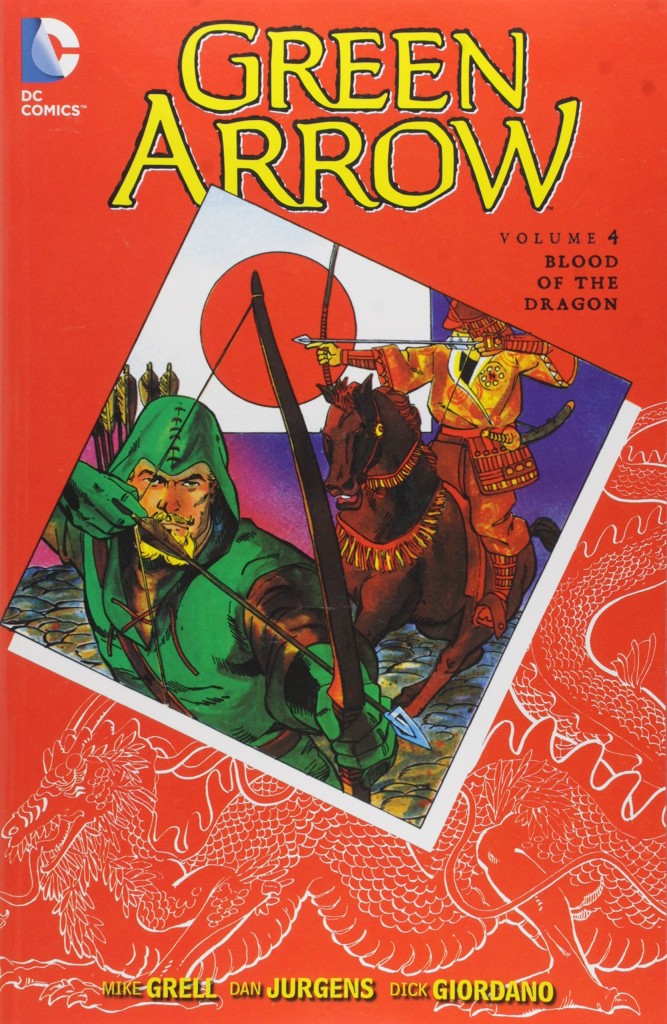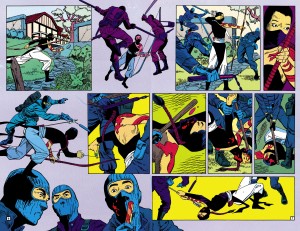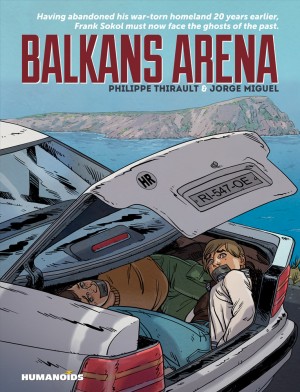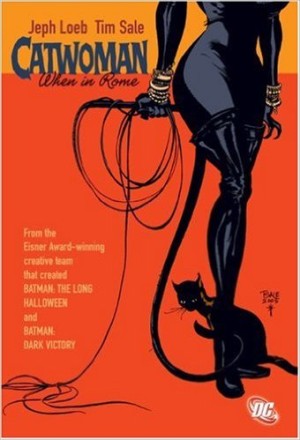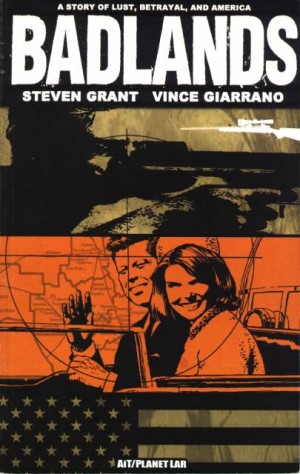Review by Ian Keogh
Mike Grell’s opening chapter set-up to the title story is beautifully constructed. It once again marks the passage of time by noting Oliver Queen has now turned 45, but the primary focus is Shado, the former Yakuza assassin, possibly more skilled with a bow and arrow than he is. She has an infant son, and that’s the leverage used to coerce her into performing an assassination, seemingly on behalf of American interests. Green Arrow is manipulated into coming to Shado’s aid, and Grell increases tension by letting readers know that he’s being set up as a patsy, and the consequences are intended to be fatal. The icing on the cake, however, is the hint that the entire affair ties in with the 1963 assassination of President Kennedy.
It’s been a feature of this Green Arrow series that sequences are told without words, and the quantity of those pages is increased in ‘Blood of the Dragon’, leaving Dan Jurgens to carry a lot more of the story than would be the case with words. He’s fine for the most part, with strong storytelling, but when the costumes appear he reverts to the exaggerated nature of superhero comics with heroically posed figures and legs akimbo action.
Despite a clever title that slots into place with the reading, there’s a desperation to the search aspect of the middle chapters, but in plot terms they very much come across as marking time until the finale, which does supply the intended pay-off. A concealed parentage angle is overplayed, though.
Each of the following two part tales opens a door into a darker corner of the DC universe as Green Arrow meets some unlikely guest stars. John Constantine is in passing as Trevor Von Eeden, one of comics’ great lost talents, illustrates the opening of a tale with some imagination. It’s completed by the less impressive J.J. Birch sending Green Arrow to England, specifically Nottingham, once home of Robin Hood. Providing a passing comment on the welcoming experience of British immigration, Grell’s story is fanciful investigation of witchcraft with a rather telegraphed villain.
Far better is the meeting with Warlord, a sword and sorcery character created by Grell in the 1970s. There’s an amusing opening chapter based on Warlord’s visual resemblance to Oliver Queen (a look Grell inherited), and the conclusion doesn’t take the well trodden path either. Warlord back on Earth is a more enigmatic person than he is when fighting demons and sorcerers, and there’s a pleasing sentimentality to what’s a relatively simple story. It’s also constructed well enough that anyone with no idea who Warlord is can participate equally in the enjoyment. Jurgens is back to illustrate, and is a better fit here for a story without costumes.
Grell’s work on Green Arrow is frustratingly inconsistent, although sometimes not helped by the art. When he’s really firing on all cylinders he turns out compelling and suspenseful action stories, often with neat character aspects, but that’s only ever for around half the book. Black Arrow continues the series reprinting Grell’s work, which has reached 1990 by the end of this collection.
